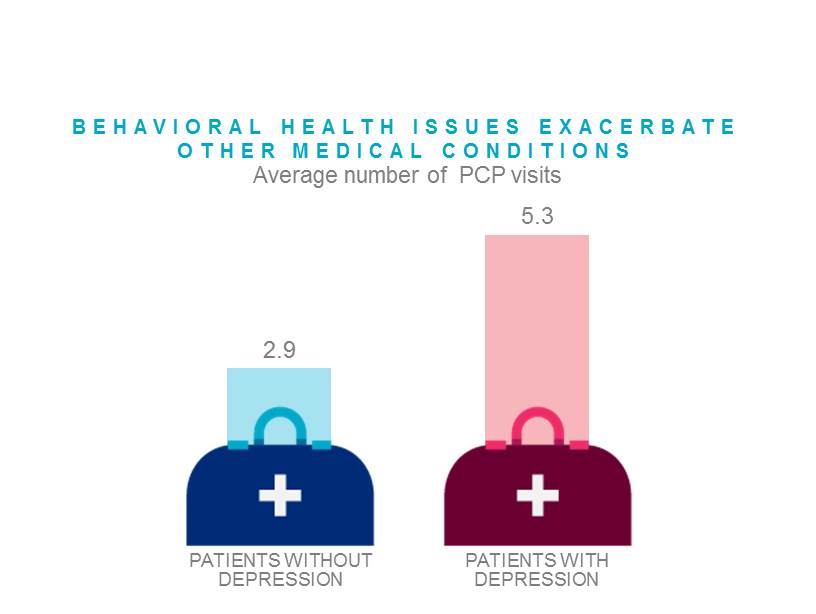The Real Cost of Behavioral Health Problems

When employers are working on strategies to manage health benefit cost, behavioral health benefits aren’t often top of mind. After all, only about 4% of claims are related to treatment for behavioral health problems. But what’s missing from that picture are claims for comorbid conditions – other health problems that go along with the mental illness or behavioral health issues. According to one analysis, together these account for 22% of total medical spend. [1]
In other words, behavioral and medical health problems very often go hand in hand. One study found that patients with depression visited their primary care doctor nearly twice as often as patients without depression in given year (5.3 visits compared to 2.9 visits, respectively). [2] That’s why prevention, early diagnosis and effective treatment of behavioral health issues could have a big impact on total medical spending. It’s also estimated that 24% of patients with chronic medical conditions have undiagnosed depression. Diagnosing and treating the depression might result in improved medical health.
There is also the indirect cost of productivity losses to consider. One study estimates that productivity loss related to behavioral health issues amounts to $2,025 per employee per year. [1] The growing problem of opioid addiction is a contributor. It’s definitely a workplace problem: 70% of people using illicit drugs, including non-medical uses of opioids, are employed. And it’s not just employees, but their dependent children that factor into the equation. With 12% of 18–25 year olds reporting that they use opioids for non-medical reasons, adult dependent substance abuse is driving medical costs for employers. And substance abuse is impacting your youngest members as well; 6% of 12–17 year olds report using opioids non-medically. [3] Between the direct (medical) and indirect (lost productivity) cost, opioid abuse could be costing employers as much as $8 billion per year. [1]
The purpose of this post was to get your attention! If it worked, now check out Sandra Kuhn’s post about what you can go to support better behavioral health in your organization.
Sources:
[1] Castlight book of business and clinical review and indirect costs = $2,025 PEPY. 20% of $10,128 PEPY, based on Edington DW, Burton WN. Health and productivity due to behavioral health based on analysis from Castlight Clinical Team.
[2] Luber MP, Hollenberg JP, Williams-Russo P, DiDomenico TN, Meyers BS, Alexopoulos GS, Charlson ME. Diagnosis, treatment, comorbidity, and resource utilization of depressed patients in a general medical practice. Int J Psychiatry Med. 2000;30(1):1-13.
[3] Melek S, Norris D. Chronic Conditions and Comorbid Psychological Disorders. Seattle: Milliman, 2008. The National Council on Alcohol and Drug Dependence.
